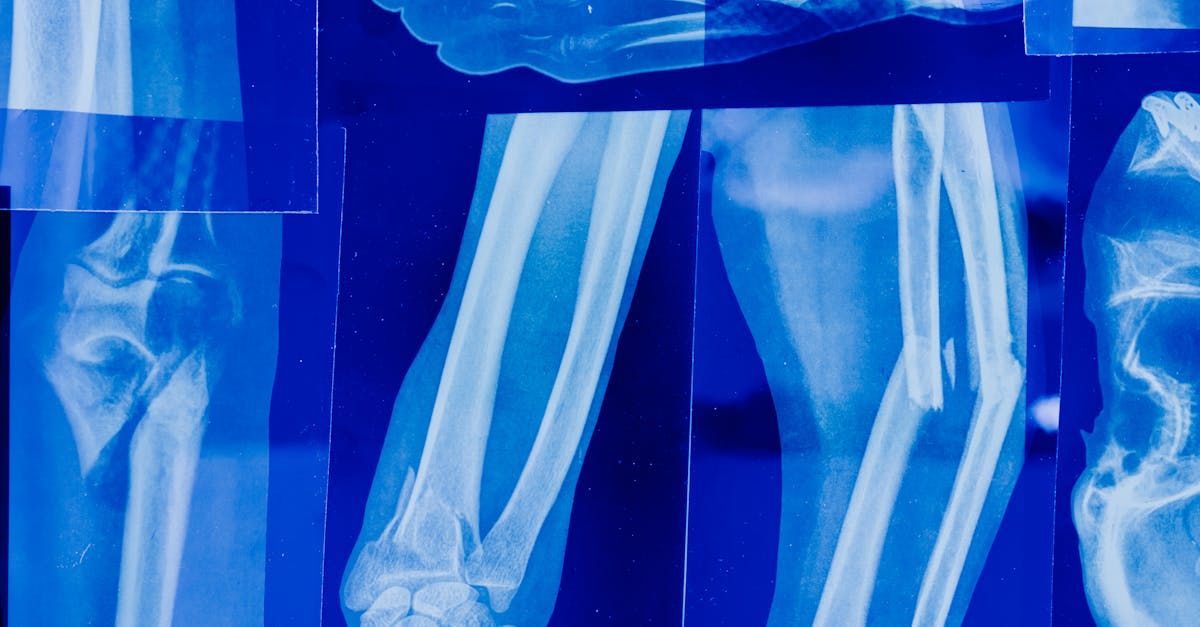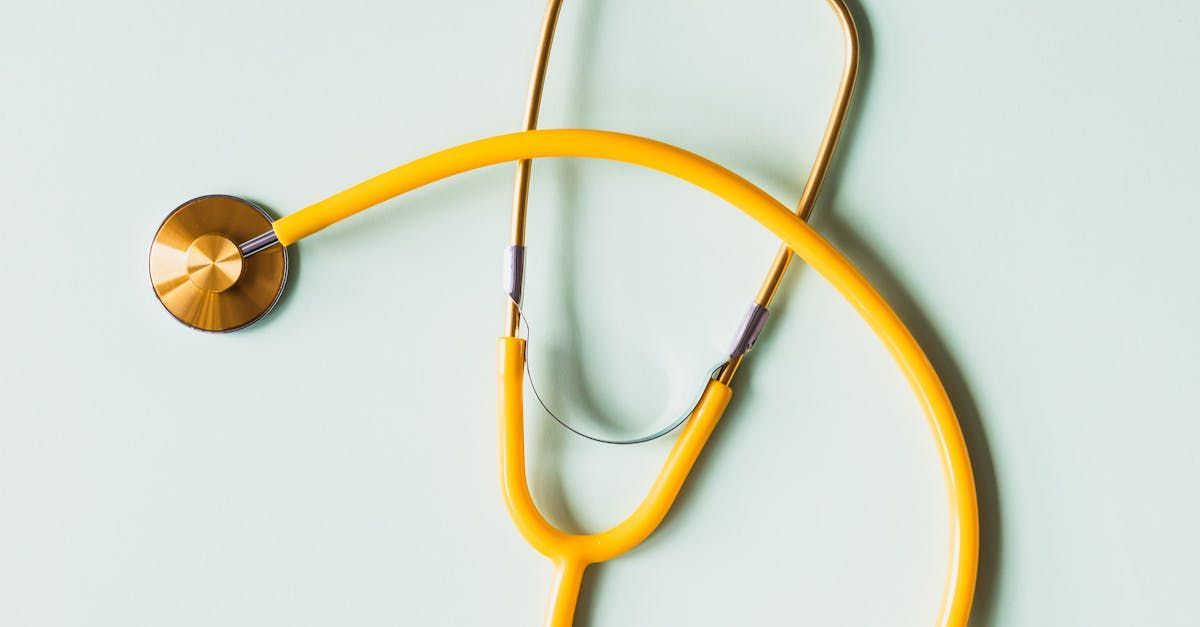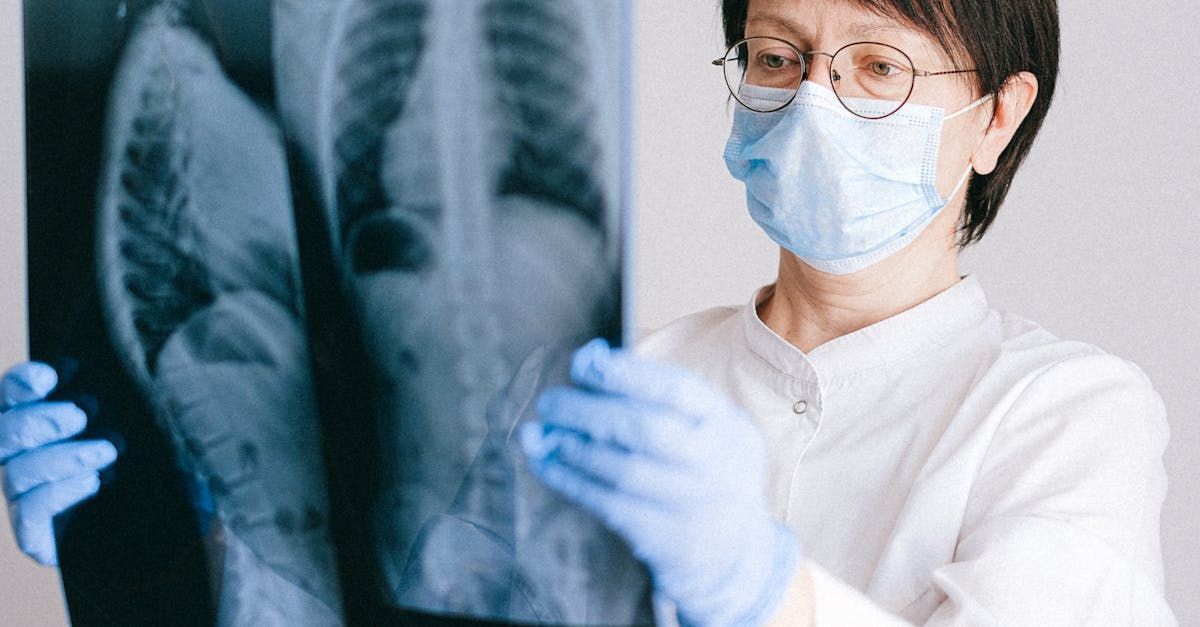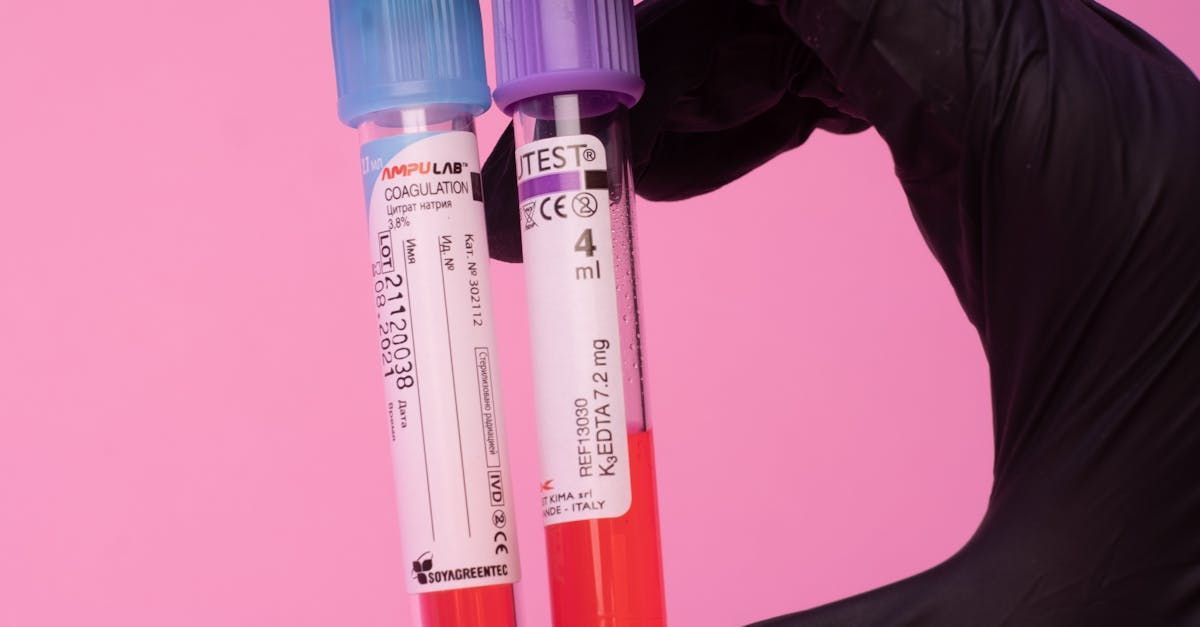Telemedicine and Precision Medicine: A Synergistic Approach
In recent years, the healthcare landscape has undergone a dramatic transformation, driven by technological advancements and a growing demand for more personalized care. Telemedicine, the practice of delivering medical services remotely through telecommunications technology, has surged in popularity, especially in the wake of the COVID-19 pandemic. This rise in telemedicine presents a unique opportunity to enhance precision medicine, which tailors medical treatment to the individual characteristics of each patient.
Telemedicine offers numerous benefits, including increased accessibility to healthcare services, reduced travel time for patients, and the ability to provide continuous monitoring and support. By leveraging telemedicine, healthcare providers can gather real-time data and insights into patients' health, enabling more accurate and timely interventions. This real-time data collection is particularly valuable in precision medicine, where understanding the nuances of a patient's health condition is crucial for developing personalized treatment plans.
The synergy between telemedicine and precision medicine has the potential to revolutionize healthcare. By integrating these two approaches, healthcare providers can deliver more effective, personalized care, improve patient outcomes, and enhance the overall efficiency of the healthcare system. This blog will explore the rise of telemedicine, its potential to enhance precision medicine, and the transformative impact of their synergistic approach on healthcare.
Understanding Telemedicine and Precision Medicine
Telemedicine refers to the practice of delivering healthcare services remotely using telecommunications technology. This includes consultations via video calls, remote monitoring of patients' health metrics, and the use of mobile health applications. Telemedicine breaks down geographical barriers, allowing patients in remote or underserved areas to access medical expertise that was previously out of reach. It also offers convenience for patients with busy schedules or mobility issues, ensuring they receive timely care without the need to travel.
Precision medicine, on the other hand, is an innovative approach to medical treatment that considers individual variability in genes, environment, and lifestyle for each person. Unlike traditional medicine, which often applies a one-size-fits-all approach, precision medicine tailors treatment and preventive strategies to the unique characteristics of each patient. This personalized approach aims to improve the effectiveness of therapies and reduce adverse effects by targeting the underlying mechanisms of disease at a molecular level.
Complementary Roles
Telemedicine and precision medicine complement each other in several ways, creating a robust framework for delivering personalized healthcare.
- Data Collection and Analysis: Telemedicine facilitates continuous and real-time data collection from patients through wearable devices, remote monitoring systems, and mobile health apps. This constant stream of health data is invaluable for precision medicine, which relies on detailed information about a patient's health status to create personalized treatment plans. The integration of telemedicine data with genomic, environmental, and lifestyle data enhances the accuracy and efficacy of precision medicine interventions.
- Accessibility and Reach: Precision medicine often requires specialized consultations and frequent monitoring, which can be challenging for patients living in remote areas or those with limited mobility. Telemedicine bridges this gap by providing access to specialists and enabling remote follow-ups. This ensures that patients receive the personalized care they need regardless of their location, enhancing the reach and impact of precision medicine.
- Patient Engagement and Compliance: One of the key challenges in precision medicine is ensuring patient adherence to personalized treatment plans. Telemedicine enhances patient engagement by providing easy access to healthcare providers, educational resources, and support systems. Regular virtual check-ins and remote monitoring help maintain patient compliance, leading to better health outcomes.
- Cost-Effectiveness: Both telemedicine and precision medicine have the potential to reduce healthcare costs. Telemedicine cuts down on unnecessary hospital visits and travel expenses, while precision medicine minimizes the trial-and-error approach to treatment, reducing the costs associated with ineffective therapies and adverse drug reactions. When combined, these approaches can lead to significant cost savings for both patients and healthcare systems.
The synergy between telemedicine and precision medicine creates a comprehensive, patient-centered approach to healthcare. By leveraging the strengths of both, healthcare providers can offer more effective, efficient, and personalized care, ultimately improving patient outcomes and transforming the healthcare landscape.
The Role of Telemedicine in Precision Medicine
Remote Consultations
One of the primary benefits of telemedicine is the ability to conduct remote consultations. Patients can connect with healthcare providers via video calls, phone calls, or secure messaging platforms from the comfort of their homes. This is particularly beneficial for patients requiring specialized care that may not be available locally. For instance, a patient with a rare genetic disorder can consult with a specialist located in another city or even another country without the need for travel.
Remote consultations also facilitate regular follow-ups, which are essential for managing chronic conditions and adjusting treatment plans based on the patient’s progress. This continuous interaction between patients and healthcare providers ensures that any changes in the patient’s condition are promptly addressed, enhancing the effectiveness of precision medicine.
Data Collection and Monitoring
Telemedicine excels in real-time data collection and patient monitoring, which are crucial components of precision medicine. Wearable devices, mobile health apps, and remote monitoring systems can track a wide range of health metrics, such as heart rate, blood pressure, glucose levels, and physical activity. This data is transmitted to healthcare providers in real-time, providing a comprehensive view of the patient’s health status.
For example, a patient with diabetes can use a continuous glucose monitor (CGM) that sends glucose readings to their healthcare provider. The provider can then analyze these readings to make timely adjustments to the patient’s treatment plan. Similarly, patients with cardiovascular conditions can use wearable devices that monitor heart rate and rhythm, alerting healthcare providers to any irregularities that require intervention.
The integration of telemedicine with electronic health records (EHRs) further enhances data collection and analysis. Healthcare providers can access a patient’s complete medical history, genetic information, and real-time health data in one place, facilitating informed decision-making and personalized care.
Personalized Care
Telemedicine plays a vital role in enhancing personalized treatment plans through continuous monitoring and timely interventions. By collecting real-time data, healthcare providers can identify trends and patterns that may not be apparent through periodic in-person visits alone. This detailed understanding of the patient’s health enables the development of highly personalized treatment plans tailored to the individual’s unique needs.
Moreover, telemedicine allows for dynamic adjustments to treatment plans based on the patient’s response to therapy. For instance, if a patient is experiencing side effects from a medication, the healthcare provider can promptly modify the dosage or switch to an alternative therapy. This flexibility is particularly important in precision medicine, where treatments are often tailored to the molecular profile of the patient’s disease.
Telemedicine also enhances patient education and engagement, which are critical for the success of personalized treatment plans. Through virtual consultations, healthcare providers can educate patients about their conditions, treatment options, and the importance of adherence to prescribed therapies. Patients can ask questions and receive immediate feedback, fostering a collaborative approach to healthcare.
In summary, telemedicine significantly contributes to the implementation and success of precision medicine by enabling remote consultations, facilitating real-time data collection and monitoring, and enhancing personalized care. The integration of these two innovative approaches holds great promise for the future of healthcare, offering more effective, efficient, and patient-centered solutions.
Benefits of Integrating Telemedicine and Precision Medicine
Improved Access to Care
One of the most significant benefits of integrating telemedicine with precision medicine is the expanded access to care. Many patients, especially those in rural or underserved areas, face significant barriers to accessing specialized healthcare services. Telemedicine breaks down these geographical barriers, allowing patients to connect with specialists and receive expert care without the need to travel long distances.
This increased accessibility is particularly important for precision medicine, which often requires input from specialists in genetics, oncology, and other fields. By leveraging telemedicine, patients can access the necessary expertise to develop and implement personalized treatment plans, regardless of their location. This democratization of healthcare ensures that more patients can benefit from the advancements in precision medicine, leading to better health outcomes across diverse populations.
Cost Efficiency
The integration of telemedicine and precision medicine also offers significant cost-saving opportunities for both patients and healthcare systems. Traditional healthcare models often involve multiple in-person visits, hospital stays, and extensive diagnostic testing, all of which can be costly and time-consuming. Telemedicine reduces the need for frequent in-person visits by enabling remote consultations and continuous monitoring.
For example, patients with chronic conditions can be monitored remotely using wearable devices and mobile health apps, reducing the need for hospital admissions and emergency room visits. This not only lowers healthcare costs but also minimizes the financial burden on patients and their families. Additionally, precision medicine's targeted approach reduces the trial-and-error associated with conventional treatments, decreasing the costs related to ineffective therapies and adverse drug reactions.
Enhanced Patient Engagement
Patient engagement is a critical factor in the success of any healthcare intervention, and the integration of telemedicine with precision medicine significantly enhances patient involvement. Telemedicine provides patients with easy access to their healthcare providers, allowing for more frequent and meaningful interactions. This continuous communication fosters a sense of partnership between patients and providers, empowering patients to take an active role in managing their health.
Moreover, telemedicine platforms often include educational resources and tools that help patients understand their conditions and treatment options. This increased knowledge enables patients to make informed decisions about their care and adhere to personalized treatment plans more effectively. For instance, a patient using a telemedicine app can receive reminders to take their medication, log their symptoms, and track their progress, all of which contribute to better health outcomes.
By providing real-time feedback and support, telemedicine also helps address any concerns or issues patients may have promptly. This proactive approach not only improves patient satisfaction but also enhances the effectiveness of precision medicine interventions.
In summary, the integration of telemedicine and precision medicine offers numerous benefits, including improved access to care, cost efficiency, and enhanced patient engagement. By combining these two innovative approaches, healthcare providers can deliver more personalized, effective, and efficient care, ultimately transforming the healthcare landscape for the better.
Case Studies and Success Stories
Case Study 1: Telemedicine in Managing Chronic Diseases with Precision Medicine
A notable example of the successful integration of telemedicine and precision medicine is the management of chronic diseases such as diabetes. At Notable Labs, a comprehensive telemedicine program was implemented to provide personalized care for diabetic patients. By using continuous glucose monitors (CGMs) and wearable devices, patients' glucose levels were monitored in real-time and transmitted to healthcare providers.
Patients received personalized treatment plans based on their unique genetic profiles and lifestyle factors. Through regular virtual consultations, healthcare providers could promptly adjust medications, dietary recommendations, and physical activity plans. This approach not only improved glycemic control but also enhanced patient engagement and adherence to treatment plans. The combination of telemedicine and precision medicine resulted in better health outcomes, reduced hospital admissions, and significant cost savings.
Case Study 2: Remote Genetic Counseling and Testing Through Telemedicine
Genetic counseling and testing are critical components of precision medicine, often requiring specialized expertise. Notable Labs pioneered a telemedicine initiative to provide remote genetic counseling and testing services. Patients could schedule virtual consultations with genetic counselors to discuss their family history, potential genetic risks, and the benefits of genetic testing.
Following the consultations, genetic tests were sent to patients' homes, allowing them to provide samples conveniently. The results were analyzed, and personalized reports were discussed in follow-up virtual appointments. This telemedicine approach eliminated the need for patients to travel to specialized centers, making genetic counseling and testing more accessible. It also facilitated early detection of genetic disorders and allowed for the development of targeted prevention and treatment strategies, showcasing the powerful synergy between telemedicine and precision medicine.
Case Study 3: Telemedicine and Precision Medicine in Rural and Underserved Areas
In rural and underserved areas, access to specialized healthcare services is often limited. Notable Labs implemented a telemedicine program to deliver precision medicine to these communities. The initiative involved partnering with local healthcare providers to integrate telemedicine platforms and precision medicine protocols.
Patients in these areas could connect with specialists through telemedicine for comprehensive evaluations and personalized treatment plans. For instance, cancer patients received tailored therapies based on their genetic profiles, with ongoing monitoring and adjustments facilitated through remote consultations. This program significantly improved access to high-quality care, reduced travel burdens, and enhanced the overall health outcomes for patients in rural and underserved regions.
The success of these case studies underscores the transformative potential of integrating telemedicine with precision medicine. By leveraging technology and personalized care, Notable Labs has demonstrated how this synergy can revolutionize healthcare delivery, making advanced treatments more accessible, efficient, and effective.
Challenges and Barriers
Technical Challenges
One of the primary challenges in integrating telemedicine with precision medicine is the technical infrastructure required to support these advanced healthcare models. Reliable internet connectivity, particularly in rural and underserved areas, is a significant barrier. Telemedicine relies heavily on high-speed internet for video consultations, real-time data transmission, and remote monitoring. Without robust internet infrastructure, the effectiveness of telemedicine services is compromised.
Additionally, the integration of various health monitoring devices and electronic health records (EHRs) can pose technical challenges. Ensuring that these devices and systems can seamlessly communicate with each other is crucial for the smooth functioning of telemedicine and precision medicine. Interoperability standards and secure data exchange protocols need to be established to overcome these technical hurdles.
Regulatory and Privacy Concerns
Navigating the regulatory landscape is another critical challenge in the adoption of telemedicine and precision medicine. Different regions have varying regulations regarding telemedicine practices, patient data management, and cross-border healthcare services. Compliance with these regulations is essential to ensure the legality and ethical standards of telemedicine services.
Data privacy concerns also play a significant role. The collection, storage, and transmission of sensitive patient data require stringent security measures to protect against breaches and unauthorized access. Healthcare providers must adhere to regulations such as the Health Insurance Portability and Accountability Act (HIPAA) in the United States and the General Data Protection Regulation (GDPR) in Europe to ensure patient data is handled securely. Notable Labs has implemented comprehensive data security protocols to address these concerns, ensuring that patient information is protected at all times.
Patient and Provider Acceptance
The acceptance and adoption of telemedicine and precision medicine by both patients and healthcare providers are crucial for their successful implementation. For patients, the shift from traditional in-person consultations to virtual consultations can be daunting. Concerns about the quality of care, the impersonal nature of virtual interactions, and the technical skills required to use telemedicine platforms can hinder acceptance.
Healthcare providers may also face challenges in adapting to new technologies and workflows. Training and support are essential to help providers integrate telemedicine into their practice effectively. Additionally, the reimbursement models for telemedicine services need to be addressed to ensure that providers are fairly compensated for virtual care.
Notable Labs has focused on education and support to facilitate the adoption of telemedicine and precision medicine. By providing comprehensive training for healthcare providers and user-friendly platforms for patients, Notable Labs aims to overcome these acceptance barriers.
Future Directions and Opportunities
Advancements in Technology
The future of telemedicine and precision medicine is closely tied to advancements in technology. Artificial intelligence (AI), machine learning (ML), and the Internet of Things (IoT) are set to play pivotal roles in enhancing these healthcare models. AI and ML algorithms can analyze vast amounts of patient data to identify patterns, predict health outcomes, and suggest personalized treatment plans. For example, AI-driven diagnostic tools can assist in early detection of diseases, while ML models can optimize treatment protocols based on real-time data.
IoT devices, such as wearable health monitors and smart medical devices, will continue to revolutionize remote patient monitoring. These devices can continuously collect health data, providing valuable insights into a patient’s condition and enabling proactive healthcare interventions. The integration of AI, ML, and IoT with telemedicine platforms will facilitate more accurate, efficient, and personalized care, pushing the boundaries of what is possible in precision medicine.
Global Expansion
The potential for expanding telemedicine and precision medicine globally presents exciting opportunities. In many parts of the world, access to quality healthcare remains limited due to geographical, economic, and infrastructural constraints. Telemedicine can bridge these gaps by delivering medical services to remote and underserved regions. As internet connectivity improves globally, the reach of telemedicine will expand, bringing specialized care to more patients.
Moreover, global expansion of precision medicine can lead to more inclusive research and better understanding of diverse genetic backgrounds and environmental factors. This can result in the development of more effective, culturally sensitive treatment plans. Notable Labs is at the forefront of these efforts, leveraging its expertise to implement telemedicine and precision medicine programs in various regions, aiming to improve health outcomes on a global scale.
Collaborative Efforts
Collaboration between telemedicine providers and precision medicine researchers is crucial for the continued evolution of these fields. By working together, these professionals can share insights, develop innovative solutions, and create integrated care models that leverage the strengths of both approaches. Collaborative efforts can lead to the creation of comprehensive databases that combine genetic, clinical, and real-time health data, facilitating more robust research and better patient care.
Initiatives such as public-private partnerships, interdisciplinary research projects, and international collaborations can drive advancements in telemedicine and precision medicine. For example, Notable Labs has partnered with leading research institutions and technology companies to develop cutting-edge telemedicine solutions that support precision medicine. These collaborations enhance the ability to deliver personalized care, conduct groundbreaking research, and improve healthcare outcomes.
Strategies for Successful Integration
Developing Infrastructure
A robust telemedicine infrastructure is fundamental to supporting the integration of precision medicine. Healthcare providers and organizations must invest in high-quality telecommunications technology, reliable internet connectivity, and interoperable health IT systems. This infrastructure should include advanced telemedicine platforms that facilitate seamless communication between patients and healthcare providers, as well as integration with electronic health records (EHRs) and other health data systems.
Investment in wearable devices and remote monitoring tools is also crucial. These devices must be capable of collecting and transmitting accurate health data in real time. Ensuring that the infrastructure is scalable and adaptable to future technological advancements will help maintain the efficacy and efficiency of telemedicine and precision medicine.
Policy and Regulation
Creating supportive policies and regulatory frameworks is essential for the successful integration of telemedicine and precision medicine. Governments and regulatory bodies must develop clear guidelines that address data privacy, security, and interoperability standards. These policies should protect patient data while facilitating the seamless exchange of information between different healthcare systems and providers.
Additionally, policies should support the reimbursement of telemedicine services to ensure healthcare providers are fairly compensated for their time and expertise. This includes updating existing healthcare policies to recognize telemedicine consultations and remote monitoring as billable services. Encouraging regulatory harmonization across regions can also promote the global expansion of telemedicine and precision medicine.
Education and Training
Training healthcare providers and educating patients about the benefits of telemedicine and precision medicine are critical components of successful integration. Healthcare providers need comprehensive training on how to use telemedicine platforms, interpret data from remote monitoring devices, and integrate precision medicine into their practice. This training should also cover the ethical and legal considerations associated with telemedicine and precision medicine.
Patients, on the other hand, need to be educated on how to use telemedicine services effectively. This includes understanding how to schedule virtual consultations, use wearable devices, and access educational resources provided through telemedicine platforms. Patient education initiatives can help demystify telemedicine and precision medicine, making patients more comfortable and engaged with these innovative healthcare approaches.
Recap the synergy between telemedicine and precision medicine
The synergy between telemedicine and precision medicine lies in their combined ability to provide personalized, efficient, and accessible healthcare. Telemedicine facilitates real-time data collection, remote consultations, and continuous patient monitoring, which are essential for the successful implementation of precision medicine. Precision medicine, in turn, leverages this data to tailor treatment plans to the individual characteristics of each patient, enhancing the effectiveness of medical interventions.
By integrating these two approaches, healthcare providers can offer more comprehensive and patient-centered care. This integration breaks down geographical barriers, making specialized medical services accessible to a wider population. It also reduces healthcare costs through remote monitoring and timely interventions, improving patient outcomes and overall healthcare efficiency.
The future of healthcare is bright with the continued integration of telemedicine and precision medicine. Advancements in AI, machine learning, and IoT will further enhance the capabilities of these healthcare models, enabling more accurate diagnoses, personalized treatments, and proactive health management. The global expansion of telemedicine will democratize access to specialized care, ensuring that patients in remote and underserved areas receive the same quality of care as those in urban centers.
As collaborative efforts between telemedicine providers and precision medicine researchers grow, the healthcare industry will see the development of innovative solutions and integrated care models. These advancements will not only improve individual patient outcomes but also contribute to broader public health efforts by enabling more effective disease prevention and management strategies.
To realize the full potential of telemedicine and precision medicine, it is crucial for stakeholders to support their integration. Healthcare providers, policymakers, technology developers, and patients all play a vital role in this transformation.
- Healthcare Providers: Embrace telemedicine and precision medicine in your practice. Invest in training and infrastructure to deliver personalized care and stay abreast of technological advancements.
- Policymakers: Develop and implement supportive policies and regulatory frameworks that facilitate the integration of telemedicine and precision medicine. Ensure that data privacy and security standards are upheld while promoting interoperability and reimbursement for telemedicine services.
- Technology Developers: Innovate and create user-friendly telemedicine platforms, wearable devices, and health IT systems that support precision medicine. Focus on interoperability, data security, and scalability to meet the needs of diverse healthcare settings.
- Patients: Educate yourselves about the benefits of telemedicine and precision medicine. Engage actively with healthcare providers and utilize telemedicine services to take control of your health.
By working together, we can overcome the challenges and barriers to integrating telemedicine and precision medicine, paving the way for a future where healthcare is personalized, accessible, and efficient for all. Notable Labs is committed to leading this transformation, and we encourage all stakeholders to join us in revolutionizing healthcare for the better.
The integration of telemedicine and precision medicine represents a significant advancement in the healthcare industry. With the combined power of technology and personalized care, we can transform the way healthcare is delivered, making it more effective, efficient, and inclusive. By supporting the strategies outlined above and fostering collaboration among all stakeholders, we can ensure that the future of healthcare is bright and accessible to everyone, regardless of location or circumstance.
